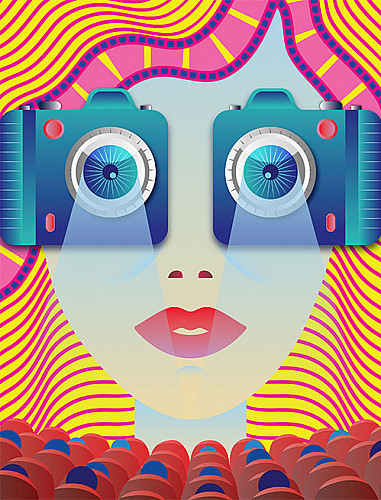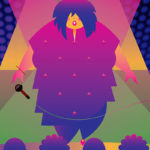Is Female-Centric Content Finally Getting The Attention It Deserves?
If one says that Hindi cinema is experiencing a new wave of feminism, they would be wrong. Our movies have always had their share of capable women on both sides of the camera. The difference being that at present, this is an issue with a louder voice, marking a stronger presence. Much of what one sees on screen is inspired by real life and the reverse holds true as well — what is presented on reel is heavily debated and discussed outside the 70-mm world. And thank god for that. The medium’s reach has been extended through shorts and the vastly popular format of web series.
Writer-directors like Sai Paranjype and Aparna Sen, recipients of the Padma Bhushan and Padma Shri respectively, command immense respect and adulation for their work. The former was known for gems like the socially relevant Sparsh (1980) and the light-hearted Chashme Buddoor (1981) while the latter, primarily known for her work in Bengali cinema, made the critically acclaimed Mr and Mrs Iyer (2001), among others. Female actors exuded considerable screen presence while embodying feisty characters like Nargis’ Radha in Mother India (1957), Shabana Azmi’s Indu in Masoom (1983), Smita Patil’s Sonbai in Mirch Masala (1987), and Sridevi’s Manju in ChaalBaaz (1989), to name a few. Such films saw a dip in the ’70s-’90s era with women playing the hot-girlfriend, obedient-daughter or submissive-wife stereotypes, being either objectified or confined to set social roles, but it has never entirely been a lopsided affair.
While doll-faced actors gyrated to the latest chartbusters on one hand, prominent directors such as Deepa Mehta and Mira Nair made films that commented on societal paradoxes and pointed a finger at patriarchy. Mehta’s Fire (1996), from the Elements trilogy, projected a homosexual relationship between two women. Starring Shabana Azmi and Nandita Das as two sisters-in-law resigned to unhappy married lives, who are forced to turn to each other, it created a stir and was mainly rejected because of its ‘bold’ content. Nair in Monsoon Wedding (2001) portrays many a taboo like premarital sex and deals with child molestation, which at the time not many were willing to speak of. The onus lay on women to make films about strong female characters or call out men for misdeeds.
But do only women shoulder the responsibility of championing female empowerment in Bollywood? “I think efforts are put in by everyone,” says Juhi Chaturvedi, who penned Vicky Donor (2012) and the delightfully sensitive Piku (2015). “If you see the recently released Pink, most people working on the film were men, on a subject which is anti-men. There are men around now who are not afraid of expressing the right opinion. If somebody is making a women-centric film, what is wrong with that?” Chaturvedi’s characters like Piku, an independent, sexually active woman, and Biji and Mrs Arora, a saas-bahu pair shown enjoying a drink together in Vicky Donor, are real and contemporary. Many a time termed progressive, one would think the audience may reject these characters, but they received a warm response.
The acceptance of what women can be doing and what can be portrayed on screen is greater now. Tabu has essayed many interesting characters, be it a bar dancer in Chandni Bar (2001) or a modern independent woman refusing to abide by social norms in Cheeni Kum (2007), and it is common knowledge that she was the one actor at the time who could pull it off. Kangna Ranaut’s Rani in Queen (2013) is always cited as an exemplary female character. Kalki Koechlin as Leni/Chanda in Dev D (2009), the wronged schoolgirl-turned-prostitute, manages to garner sympathy and command respect. Radhika Apte’s Kanchan in Badlapur (2015) is a trusting albeit feisty wife. Swara Bhaskar’s Payal in Tanu Weds Manu Returns (2015) has a child out of wedlock, who her impotent husband later agrees to adopt. Richa Chadha’s Devi in Masaan (2015) was ‘caught’ having premarital sex.
Shades of grey are welcome even if they leave a bitter aftertaste. The acceptance of women as independent sexual beings carving their own destiny is also something that the audience has begun to accept — a huge victory for Bollywood. No longer does Veronica have to play a good Indian girl to woo her man a la Cocktail (2012). So, what are the kinds of characters that should be appearing more on screen? Independent film-maker Paromita Vohra remarks, “I’d like to see more diverse and flawed female characters. I’d like to see older women as central or important characters. And I’d like to see a lot more humour, more sexual warmth and expression. In fact, every time a film has had these elements it has been a hit — Queen, Piku, Khoobsurat.”
Just how much the times have changed reflects in the decline of the term ‘female directors’. Zoya Akhtar is one of the most prolific contemporary film-makers we have. Konkona Sen Sharma’s directorial debut, A Death in the Gunj (2016), was the opening feature at the MAMI Film Festival. Gauri Shinde brought Sridevi as the omnipotent homemaker into our lives with English Vinglish (2012). Shonali Bose’s Margarita, with a Straw (2014) had Koechlin playing a teenager with cerebral palsy exploring her sexuality and taking on the dual challenge of introducing a protagonist with a disability and then showing her having sexual experiences with men and women.
Good content has been making its way to our screens through different formats. Short films have always been around but with recent releases like the Naseeruddin Shah-Shernaz Patel starrer Interior Cafe Night (2016), this format has gained popularity. These are also important when highlighting social issues, and one such example is Vohra’s Cosmopolis: Two Tales of a City (2004). “Since short films are also a very independent form, there is great freedom to make the film in a way that will delight the audience and express the film-maker’s vision. What they do particularly well is take a small slice of life and explore its social, political and emotional dimensions. Cosmopolis: Two Tales of a City frames the conflict between vegetarians and non-vegetarians as a contest between goddesses Annapurna and Lakshmi for control over Mumbai, linking it to ideas of changes in the city’s economy and the effect on its culture and relationships. So, in 13 minutes, the film talks about the complexities of urban life and change in an engaging and accessible way,” she opines.
The web series is another popular format making its way to the audience’s screens. It allows the film-maker to pick the kind of content she wants to make without the hang-ups of finding distributors, and the tension of time slots. The Viral Fever (TVF) has been doing some great work on this front. Swara Bhaskar plays a woman who looks for love outside of an unhappy marriage in Voot’s #ItsNotThatSimple. Richa Chadha, set to star in Powerplay for Amazon Prime, feels that web content in the country hasn’t reached its potential yet. “I like what AIB (All India Bakchod) and TVF do. They make some interesting stuff. I’m looking forward to longer one-hour episodes. I’m sure we’ll get there,” she affirms. The burgeoning of new web portals has created a whole industry of dedicated personnel around it. Sure, film actors star in one or two shows but the market is primarily filled with theatre actors and performers who do not want to get into the rut of daily soaps where they play half-baked characters.
Stereotypes do exist for a reason but breaking them must be one’s motive when creating content. According to Chaturvedi one such character pattern that ticks her off is the definition of the word ‘modern’ and the idea of what such a woman should be like. “When we are showing a modern girl in films she is dressed in a certain way, and must be seen abusing and smoking. Modernity could be just in the thought. It’s the mind inside that needs to be progressive. In Piku, I could have shown her clubbing and kissing to say that she’s modern. Syed walks out of her bedroom in the morning when her father falls sick, without showing them in bed together. That’s an extremely modern house for me. Piku doesn’t wear revealing clothes or any such thing,” she says.
There is a long list of women who constantly push the boundaries both in front of and behind the camera. Fortunately, we have reached a stage where regressive concepts are shoved aside and women are celebrated in commercial cinema as well, instead of solely having a voice in its alternative counterpart. These are exciting times when an entire movie hall is rooting, in equal parts, for Kangna’s Tanu and Datto while Madhavan’s subservient Dr Sharma looks on.
Related posts from Verve:
Verve Trending
Sorry. No data so far.
us on Facebook to stay updated with the latest trends






